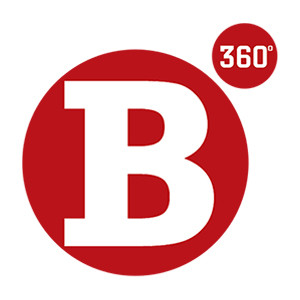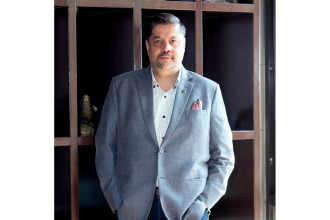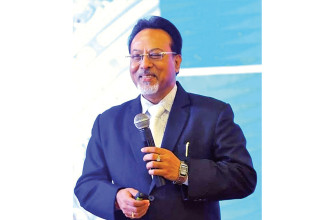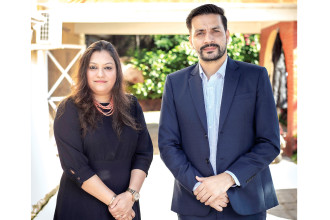
Shailesh Hazela
CEO & Managing Director, Stellantis India
Shailesh Hazela, CEO and Managing Director of Stellantis India, is at the forefront of driving the company into an era of innovation and growth. His core mission is to elevate Stellantis India to a leadership position marked by excellence across all facets of its operations, from the initial stages of product development to delivering an unparalleled customer experience. With a strong portfolio of brands like Citroën and Leapmotor, Hazela and his team are strategically poised to make a significant impact within the automotive industry.
Hazela’s passion for the automotive sector extends to a keen focus on innovative mobility solutions, with a particular emphasis on electrification and sustainability. He firmly believes that by embracing cutting-edge technologies and actively promoting environmental responsibility, Stellantis can pave the way for a cleaner, greener future. This forward-thinking approach is crucial as the global automotive landscape continues to shift towards more eco-friendly transportation options.
A staunch advocate for teamwork, Hazela sees the collective knowledge and experience of his colleagues as their greatest asset. His overarching vision is to solidify Stellantis India’s position as a dynamic leader in the rapidly evolving automotive industry and to establish it as a vital hub for global growth. This collaborative spirit and ambitious outlook are key drivers as the company continues to push boundaries, accelerate advancements, and expand its footprint in the market.
This commitment was recently underscored by Stellantis’s expansion in Nepal with Shangrila Motors second multi-brand dealership in Kathmandu that brings together Citroën, Leapmotor and Peugeot under one premium showroom. In a conversation with Business 360 while he was in Kathmandu for the opening, Hazela reiterated his mission to transform Stellantis India into a leader in excellence across all operations, from product development to customer experience, and to drive innovation and growth. Excerpts:
What strategies is Stellantis considering for making Citroën cars more accessible and appealing in price-sensitive markets like Nepal?
In Nepal’s price-sensitive environment, Stellantis leverages local sourcing and simplified models to keep costs down. For example, our India-engineered Citroën C3, Aircross and Basalt have been developed with high local content (around 90% integration in India), which helps us reduce manufacturing costs. We then pass those savings to customers via competitive pricing and essential feature packages. By tailoring equipment levels (focusing on essentials like air-conditioning, safety, space, comfort during intercity travel) and deploying models such as the C3 and eventually its electric sibling, the ë-C3, we aim to maximise value in line with Nepali budgets.
Citroën is known for its comfort and design; how do these features translate to consumer preferences in emerging markets such as Nepal where utility often outweighs luxury?
Citroën’s signature comfort and design are not mere luxury add-ons but practical benefits, even in emerging markets. We know Nepal drivers often face rough roads and long hours, so features like our specially tuned suspension and comfortable seats directly enhance usability, meaning ergonomic interiors and cushioned rides that reduce fatigue. In practice, this translates to less driver exhaustion and more enjoyable trips on Nepal’s roads. We balance this comfort with functionality: wide cabin layouts, clever storage, and durable materials ensure the vehicles remain highly practical.
-1752060789.jpg)
Considering Nepal’s rapid transition to clean energy and abundance of hydropower, how do you assess the viability of the Nepali EV market for brands like Leapmotor?
Nepal’s vast hydroelectric capacity and growing EV uptake make it a very promising market for electric brands like Leapmotor. Nearly all of Nepal’s electricity comes from renewable hydropower and most of the population has access to the grid. As a result, EV adoption is surging; Nepal now has tens of thousands of EVs on the road, with strong year-over-year growth. Consumers are already noticing the cost advantages: many report that running an EV costs about one-tenth compared to petrol. These factors - cheap, green electricity and strong consumer interest - suggest that an affordable EV like the Leapmotor T03 could thrive. Provided the charging infrastructure continues to grow, we see Nepal as a high-potential market for Leapmotor.
What makes Leapmotor stand out in the crowded EV space, especially in terms of affordability and technology for South Asian consumers?
Leapmotor sets itself apart by offering advanced EV technology at very competitive pricing. Its vehicles are designed with a high degree of vertical integration, association with Maserati for suspension testing and tuning, allowing cost efficiencies that benefit customers. For example, the Leapmotor T03 - a five-door city EV with around 265 km range (WLTP) - is priced much lower than most European competitors. Despite its compact size, it offers segment-leading tech features like modern battery management and intelligent drive systems. This makes it especially attractive in South Asia, where value-for-money and durability are key. The combination of innovation and affordability is what makes Leapmotor such a compelling choice for emerging EV markets.
New Launches: C10 in 2024, T03 in 2025 and more products to come this year.
How does Leapmotor’s platform and battery technology compare with traditional ICE vehicles in terms of cost-efficiency over a 5-10-year lifecycle, particularly in markets like ours where fuel prices are high but charging infrastructure is still developing?
Over a 5–10-year period, the Leapmotor EV platform can be more cost efficient than a traditional ICE car in Nepal due to lower maintenance costs. The T03 uses a durable LiFePO4 battery with a long warranty and minimal energy loss – meaning most of the power from Nepal’s grid translates directly into movement. In contrast, ICE vehicles lose much of their energy to heat and friction. Moreover, EVs require fewer services, no oil changes or exhaust maintenance. When combined with cheap electricity, these advantages result in significantly lower ownership costs over time. Even accounting for potential battery replacements years down the line, total costs often remain lower for EVs compared to petrol vehicles.
How do you see consumer behaviour evolving between ICE and EV vehicles in rural and semi-urban regions of India and Nepal?
In rural and semi-urban areas, consumers tend to prioritise durability and low running costs, which aligns well with Citroën’s and Leapmotor’s value propositions. While ICE vehicles currently dominate these markets, we are seeing growing interest in EVs, especially for local commutes and among younger, tech-savvy users. As charging infrastructure spreads, semi-urban consumers will be among the first to shift toward EVs. Stellantis is preparing for this transition by ensuring product durability and expanding service coverage. Our goal is to create a bridge from ICE to EV that works for all customer profiles, not just urban ones.
Do you see potential for cross-border collaboration between Nepal and India in EV infrastructure development or policy harmonisation?
India and Nepal have strong geographical and energy ties that make EV collaboration both logical and beneficial. Private players are already piloting cross-border EV drives and infrastructure initiatives. As a manufacturer present in both countries, Stellantis supports harmonisation of EV standards, regulatory alignment and shared infrastructure projects. We believe common plug standards, interoperable charging and tax incentives on both sides can foster regional EV adoption
How important is government policy such as import duties, incentives and charging infrastructure in influencing Stellantis’ decision to enter smaller markets like Nepal?
Government policy is a key enabler in any automotive market, and this is especially true for EVs. In Nepal, reduced duties on electric vehicles compared to petrol cars have helped spur early adoption. However, recent changes and stricter financing rules have started to impact demand. For Stellantis, long-term policy consistency is crucial, it enables us to plan product launches and investment with confidence. Supportive policies on taxation, EV infrastructure development, and vehicle financing all play a role in determining our strategy for Nepal and other smaller markets.
What’s next in your collaboration with Shangrila Motors?
We started with Peugeot, then added Citroën, and now Leapmotor. We will continue expanding our portfolio in Nepal based on what customers need. Shangrila Motors has been a great partner, and we are excited to grow this relationship further and bring the right vehicles to Nepali roads.






